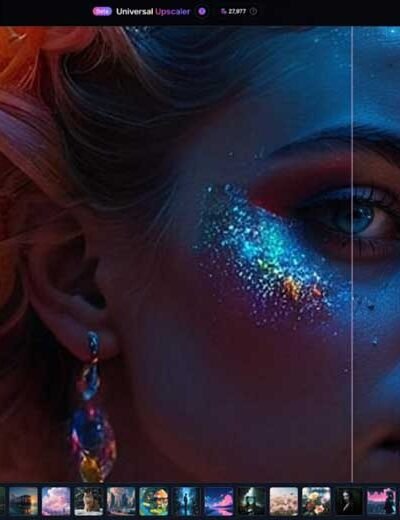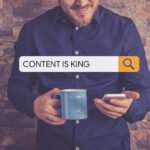Designing visual content used to be slow. Each banner, background, or concept sketch took hours, often days. Tools have evolved, but manual creation still demands time and skill. That barrier has started to crack. AI image generators are speeding up workflows, opening access, and shifting how content is made.
The Evolution of Visual Content Creation
| Period | Tools Used | Characteristics |
| Pre-digital era | Brushes, pens, film | Manual, time-intensive, skill-dependent |
| Digital design | Photoshop, Illustrator | Faster production, but still user-driven |
| AI-driven phase | Text-to-image platforms | Prompt-based creation, minimal user input |
In the past, making visuals meant starting from scratch. Even with advanced software, the process required heavy lifting from human creators. Most of the time went to ideation, composition, and corrections. Scaling this kind of work across campaigns was difficult. Marketing teams struggled to meet visual content demand.
AI tools are now taking over early-stage creation. A simple prompt can output dozens of high-quality images. Adjustments happen within seconds. Designers don’t have to handle repetitive tasks anymore. They start from completed drafts instead of blank canvases.
What Is an AI Image Generator?
An AI image generator takes a written prompt and returns an image. It does so using a trained neural network that has learned patterns from millions of pictures and captions. The tool doesn’t copy existing images. It generates new outputs based on the styles, subjects, and relationships it has learned.
Key features include:
- Prompt-based generation: Type in “red fox in a forest” and get a visual version.
- Style control: Pick from realism, anime, painting, or 3D.
- Resolution settings: Create outputs fit for thumbnails or large-scale prints.
- Editability: Some platforms support image inpainting, upscaling, or variations.
AI image generators don’t remove creative control—they shift it. Instead of moving pixels manually, creators now steer the process using language and iteration. The process favours experimentation. It also welcomes people who aren’t trained designers.
Real-World Use Cases Across Industries
Game Development
Concept artists can prototype visuals quickly. Characters, environments, or textures are now testable within minutes. Studios no longer wait days for an idea sketch. The art team can focus on refining rather than ideating.
Marketing and Advertising
Campaigns require content at scale. Ads, social media posts, and product banners need visual variants. AI image generators produce these on demand, giving marketers flexibility to test and optimise.
Publishing
Book covers, magazine illustrations, and article headers can now be drafted in-house. Teams avoid long delays associated with external illustrators. Quick iterations lead to faster approval cycles.
Social Media
Influencers and content creators gain tools to produce branded assets. Backgrounds, thumbnails, and story visuals can all be made with minimal effort.
Platforms like the Leonardo.Ai AI Image Generator are enabling teams to produce polished visuals on demand, cutting production time without sacrificing quality.
Benefits for Designers and Non-Designers Alike
For Designers:
- Speeds up ideation.
- Helps visualise concepts early.
- Reduces repetitive work.
- Frees time for high-level creative decisions.
For Non-Designers:
- Lowers the barrier to visual creation.
- No need for specialised software training.
- Helps build assets for presentations, ads, or online content.
Here’s a simplified comparison:
| Role | Before AI Image Generators | After AI Image Generators |
| Designer | Spent hours drafting visual mockups | Starts from AI-generated prototypes |
| Content Marketer | Waited on design team for visuals | Generates quick options for testing |
| Solo Creator | Outsourced artwork or used templates | Builds custom visuals via prompts |
Limitations and Ethical Considerations
Not all outputs are usable. Some images fail to capture the requested detail. Others introduce visual distortions. Prompt precision helps, but there’s still an element of unpredictability.
Originality remains another issue. Models are trained on vast public datasets. There’s an ongoing debate about whether outputs count as derivative work. Artists have raised concerns about AI mimicking their style without consent.
Biases can emerge too. Certain subjects return stereotypical or culturally skewed results. These aren’t intentional—the models mirror the data they were fed. Still, creators need to review outputs with context and care.
AI image generation also invites spammy or low-effort content. Not every use is helpful. When misused, the tools can contribute to content bloat.
Looking Ahead: What’s Next for AI in Visual Creation
Future developments are heading toward deeper integration. Expect AI models that work within mainstream creative suites. Real-time feedback loops may soon suggest prompt adjustments during editing. Voice-to-image could follow text-to-image.
Teams will fine-tune their own models using proprietary visual libraries. This creates consistency in brand assets. It also reduces output drift, which is a common problem in open-model workflows.
There’s also room for multi-modal generation. Combining text, image, and audio prompts could allow richer scene-building. AI wouldn’t just create a still image, but also a matching soundtrack or interactive layer.
Are AI Image Generators the Future of Visual Content Creation?
AI image generators are changing how content gets made. From solo creators to enterprise teams, visual production is faster, cheaper, and more accessible. While questions remain around ethics and quality, the tools are already shaping new creative norms. The shift is practical, not theoretical. Those who adapt early will gain a clear edge.
The next stage belongs to those who can prompt well, edit fast, and think visually at scale.





Leave a Reply